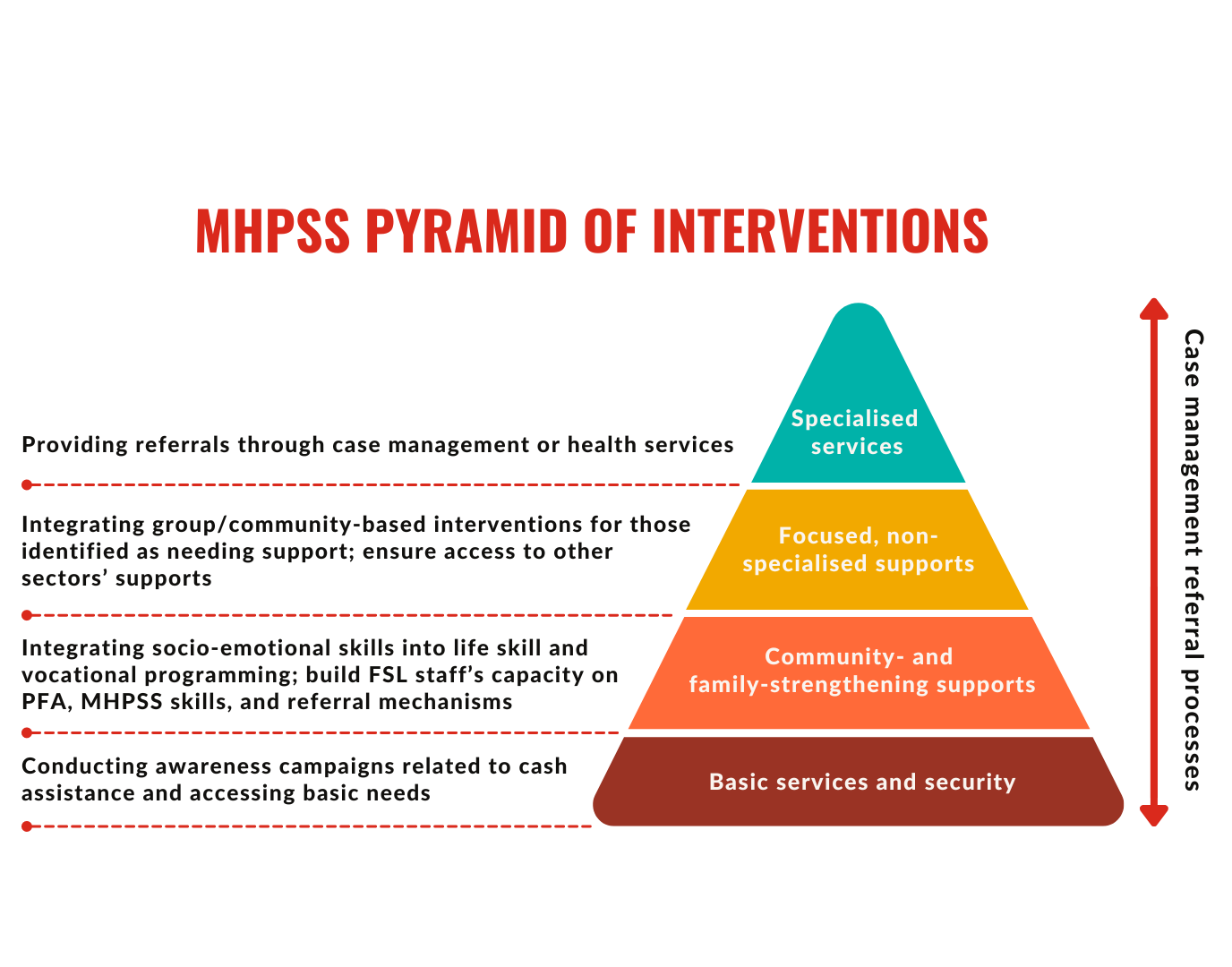Child Poverty/ Food Security and Livelihoods (FSL)
Sector-specific MHPSS recommendations
Children understand poverty as a deeply physical, emotional and social experience.
Read the summary below or access the full guidance.

Children understand poverty as a deeply physical, emotional and social experience. In fact, many children prioritise the psychological and social experience of poverty (e.g., humiliation, shame, and stigma) over any material deprivation.[1] Children also interpret a part of their own well-being (and indeed that of others) through their social relationships, so interventions that address the purely physical characteristics of impoverishment may not improve a child’s well-being or quality of life.[2]
Evidence strongly suggests that the incidence of mental health problems among children and adolescents can be reduced by addressing severe and persistent poverty, particularly during the early years of a child’s life.[3] FSL staff are ideally placed to identify families in need of further support, including individuals who may have mental health difficulties or difficulty coping.

[1] CCF (2005) Understanding children experience poverty, an introduction to development framework
[2] CCF (2005) Understanding children experience poverty, an introduction to development framework
[3] CCF (2005) Understanding children experience poverty, an introduction to development framework
Key Resources:
- Save the Children, Life Skills for Success Common Approach
- Global Protection Cluster, Cash and Voucher Assistance and Protection
- IFRC Psychosocial Centre, The Resilience Programme for Young Men–a psychosocial handbook, 2015
